Birth of the Bravehearts – Koti and Chennaya under Tulunadu King Budyanta
By Edward DSouza

Bellevision Media Network
PART TWO…..
Bairarasas of Karkala Dynasty
The Alupas were the first to rule Karkala. Their rule was followed by the Santaras, who were the feudatories of Alupas for many years. Karkala, or ancient PandyaNagari, attained political and cultural importance from the time of the Kalasa-Karkala kingdom that was established by BhairarasaOdeyas between 13th and 16th centuries. The Bhairarasas appear to be the descendants of the Santara chiefs, who ruled the Western Ghats region around the 11th century AD.
The royal family of Karkala shot to prominence right from the time of the Hoysalas. During the Vijayanagara period this family reached new heights of glory. Their kingdom extended over a wider area comprising Sringeri, Koppa, Balehonnur and Mudigere in Chikamagalur and most of the Karkala taluk. They were rich and maintained a large army. Despite engaging in wars, peace prevailed in the kingdom and this led to increased cultural activity and development.
The first important king was VeeraBhairava, who constructed basadis at Karkala and endowed land and money to numerous temples and basadis. Ramanatha and Veerapandya were his two sons. Ramanatha died during his father’s time. In his memory, a scenic lake called Ramasamudra was created, which still survives.
King VeeraPandya, at the insistence of his Guru Lalitakeerti, the pontiff of Karkala Jaina Math, installed a large statue of Bahubali on the rocky hill of Karkala. The date of the installation has been ascertained as February 13, 1432. Veera Pandya also installed the Brahmadeva Pillar in front of the statue in 1436.
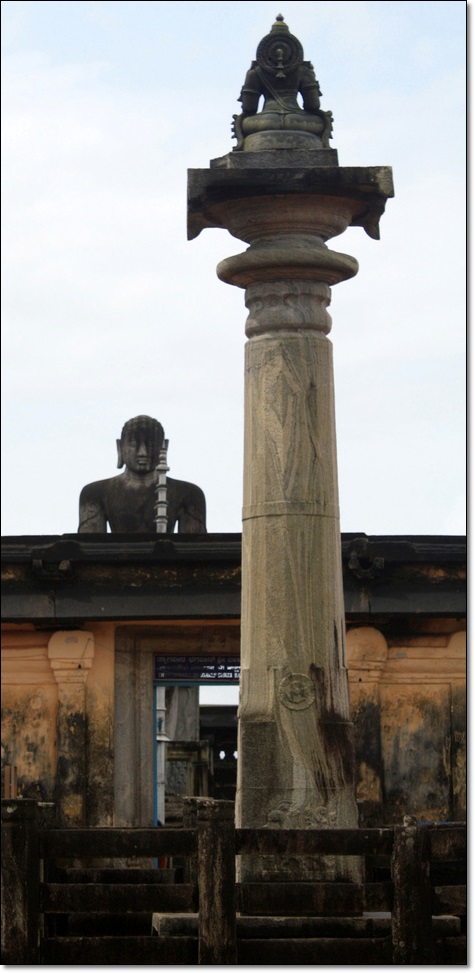
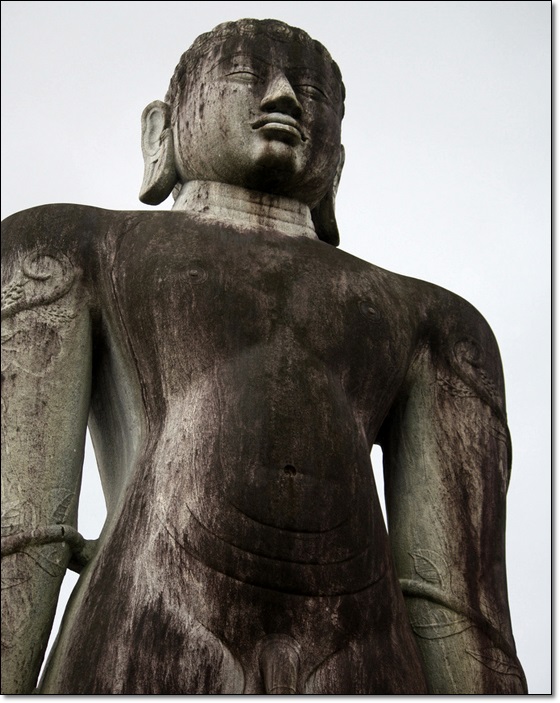
Abinava Pandya ascended the throne next and it was he who installed a carving of manastambha in front of the Neminatha Basadi in Hiriyangadi in 1457 AD. An intricately carved 54-foot-high (16 m) pillar stands in front of the Basadi. The Neminatha Basadi was renovated in 1946. An oriental school with free boarding and lodging facilities is being run here by the Bhujabali Brahmacharya Ashrama.
Abhinava Pandya’s successor was Pandya VI. He built the Kere Basadi in the middle of a lake called Anekere in 1545 AD. It is in this lake that the king’s elephants used to bathe. The Basadi and the lake still exist.
The next important king was ImmadiBhairava (Bhairava II). He constructed the ChaturmukhaBasadi on top of a small rocky hill in 1586 AD. The Basadi has four identical entrances from the four quarters leading to the Garbagriha and hence is popularly known as ChaturmukhaBasadi. This is the most celebrated structural temple in Karkala and is referred to in inscriptions as Tribhuvana Tilaka Jina Chaityalaya and Ratnaraya Dhama. The Chaturmukha Basadi is built in the form of a square mandapa or hall with a lofty doorway and pillared portico on each of its four sides and a pillared verandah. The roof is flat and is made of massive granite slabs. It has life-size statues of three theerthankaras on each side and small images of 24 theerthankaras. It took 30 years to construct this temple. In all, there are 108 pillars inside and outside the temple.
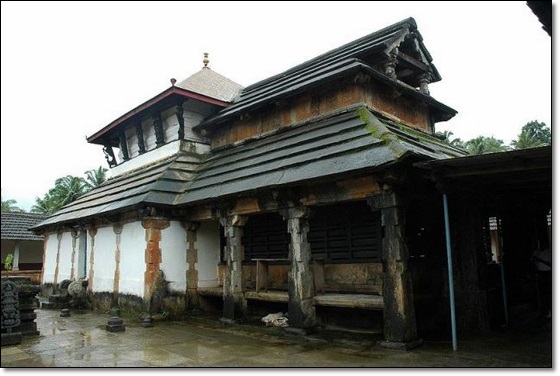
This place also came under the rule of Tippu Sultan, known as the Tiger of Mysore. In addition to his role as ruler, he was a scholar, soldier, and poet. It was under him that some of the untold and disappearing landmarks of Karkal(ಕಾರ್ಕಲ್) were made.
One of the most immanent of the time was the Kotaykani moat made in front of the KarkalKotay castle, which was used during his war against the East India Company. In this war against EIC, few of Indian Kingdom of Mysore’s elite soldiers with huge contribution and service towards the land and kingdom were granted title and land in the township of Karkala. One such title is Karkala Patayath. Second such marvel of the same regime is to discover the usage of a Gavi (or cave) route to travel to various surrounding location unseen through the mountains located near ShivatiKeray (Lord Shiva’s lake).
There are 18 basadis of antiquity, including MahaveeraBasadi, ChandranathaswamyBasadi, AdinathaswamyBasadi, AnanthanathaBasadi, Guru Basadi, and PadmavathiBasadi. However, the rulers of Karkala were tolerant towards other religions.
Therefore, temples of other religions exist, including the temples of Anantashayana and Venkataramana, MahamayaMukhyaprana, and Adi Shakti.
The St Lawrence Church was built in 1845 in a village called Nitte (Attur hamlet) where people of all religions congregate every year in January for the feast of St Lawrence.
Ballals of Padumale Dynasty
King Perumala Ballala
The story dates back to the 17th and 18th centuries to a place named Padumale. King PerumalaBallala ruled the territory. The king desired to build a lavish palace – the unparalleled beauty of which would far outlive his lifetime. After a thorough search, he zeroed on Mallaya who was known for his intelligence and work. Mallaya built a magnificent palace as desired by the king. Being immensely pleased with the work, the King – PerumalaBallala, conferred on him a name “Budyanta” which meant an Intelligent and brilliant man. The king made him a minister and slowly Budyanta took over complete charge of the kingdom. The king slowly withdrew from the day-to-day affairs and delegated his power to Budyanta. The wise say “power corrupts….. and absolute power corrupts absolutely”. Budyanta got intoxicated with power and became a dreaded, arrogant and ruthless minister who oppressed the poor subjects of the land.
The Dream: One day, towards noon, PerumalaBallala had a terrifying dream. The king sought explanation for his dream. BiraBalyaya, the famous soothsayer explained that if he does not perform rituals which were performed by his ancestors, it would not be good for the land. PerumalaBallala, following the rituals of his ancestors went for hunting. While returning after a successful hunt, a thorn pierced his foot and nothing could stop the bleeding. On reaching the palace the king’s wound swelled and the intense pain pushed him to near unconscious statement. No treatment or medicine could heal his wound or ease his pain. The king then asked for DeyiBaideti to be called. DeyiBaideti, who specialized in ayurveda was a vaidya by family tradition. Since she was pregnant, the king arranged to bring her in a royal palanquin (dandige). Before proceeding further, it is important to know story of Deyi Baideti.
Deyi Baideti: Pijinar an issue-less Brahmin, used to go to the seashore every day to offer prayers to God. One day to his surprise, a bright golden coloured egg-shaped object floated towards him. He carried the egg-shaped object home. The couple opened it to find a female baby with a glowing golden skin. Pijinar named her ’SuvarnaKedage’. SuvarnaKedage grew into a beautiful young girl. She attained puberty at an early age of seven. According to social customs prevailing then, if a girl attained puberty before her marriage, she was abandoned by the society. Under societal pressure, the teary eyed Pijina took SuvarnaKedage to Sankamale forest. He removed her gold ornaments and clothes while she was asleep and left her alone in the forest. Thus she was forced not to return home. SayanaBaida, a vaidya (doctor) by profession, was walking through the Sankamale forest in search of medicinal herbs. On hearing the wailing of SuvarnaKedage, SayanaBaida rushed to the terrified.
His heart filled with pain and compassion for the poor girl. He accepted her as his sister and took her to his home.
He named SuvarnaKedage after his late sister Deyi. His sister Deyi was married to KantanaBaida and had a daughter named Kinnidaru. SuvarnaKedage now known as Deyibaideti soon became an expert in the preparation of ayurvedic medicines. She got married to KantanaBaida but they did not have marital relations as he looked at her in veneration.
Her prayers to KemmalajeNagabrahma yielded and she became pregnant by divine grace while taking a bath in a lake.
Deyi Baideti treats King - Perumala Ballala: DeyiBaideti got the message from the king to treat her and proceeded to the palace. The suffering PerumalaBalalla promised her that he would give anything she asked, if she could cure him. Deyi started her herbal treatment and slowly the King recovered to his good health. Knowing that her knowledge of medicine had been put to good use, Deyi asked for the King’s permission to leave and reminded him gently about his promise. The ungrateful King denied having made any such promise.
Deyi left the palace wondering about changed behaviour of the king. As she stepped out of the Palace, the Kings wound was torn apart. Immediately he sent his queen to bring Deyi back. The queen pleaded with Deyi to save her husband’s life. Softhearted Deyireturned to treat the King once again. The king felt ashamed at his ungrateful behaviour and requested to be forgiven. Soon the kings wounds healed and the kingdom celebrated his rejuvenation.
Birth of the Bravehearts – Koti and Chennaya: A naming ceremony was arranged and the king named the twins as Koti(Sun) and Chennaya(Moon). The children’s horoscopes predicted that the boys would bring name and fame to their land. The very next morning of the naming ceremony, Deyi’s soul departed for heavenly abode. PerumalaBallala was taken by grief at sudden demise of Deyi who came as a God in disguise to save his life. He arranged for a stately funeral.
The king asked KantanaBaida and SayanaBaida to leave Deyi’s children in the palace as it would be difficult for Kantana and Sayana to take care of the newborn twins. The two with a heavy heart acceded to the king’s request and went home. They looked forward to the day Koti-Chennaya would be big enough to be taken back home.
The twins became center of attraction and affection in the palace. The king played with them and treated them like his own children. They sat on his lap, they shared food with him, they slept by his side. Their royal qualities impressed the king very much. The king’s growing affection towards the twins made shrewd Budhyanta jealous. He feared someday the boys would overshadow him and thus he would lose his importance. He succeeded in inciting the Queen against the boys and the queen started pestering the King to send the boys back.
Budhyanta’s plan worked and one day the king called for SayanaBaida and handed over the custody of the boys to him. Their father Kantana had an untimely death. King ordered Sayana to send them to Gymnasium and to make them learn archery. He promised Sayana to take care of all their needs; milk, food and clothing. They left the palace and were warmly welcomed by the baida community.
Koti and Chennaya loved playing. Once when they were aged around seven, they approached some children playing with a ball (or palle-a red dry fruit almost flat on both sides). They were Budhyantas children. Koti-Chennaya requested the boys to include them in the team, but Budyantas arrogant children refused to allow them because they were from different caste. Koti-Chennaya tried in vain to make them understand that caste-system had nothing to do with children’s play.
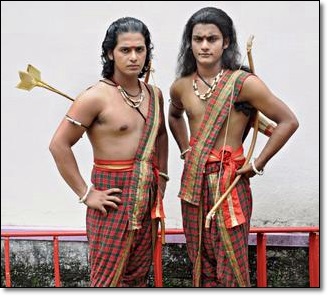
Finally Budhyantas children agreed to play on the condition that whoever wins would keep the ball. Koti-Chennaya won the game but the Budhyantas children refused to part with the ball. The Strongly built Koti-Chennaya beat them up. Budyantas children started crying loudly. Just then, Budhyanta who was nearby in the fields, stepped in on hearing the loud cries of his children. Taking his children’s side Budhyanta scolded Koti-Chennaya for snatching the ball. After some exchange of words, Budhyanta forcibly took the ball away from Koti-Chennaya. Furious, at this act of Budhyanta, Koti-Chennaya took a vow to take back the ball when they grew up. This incident sowed the seeds of hatred for Budhyanta in the hearts of young Koti-Chennaya.
Garadi: The handsome brothers joined Garadi for extensive training in bodybuilding, archery and fencing. They soon become very popular for their bravery and skill in armed fights. Koti-Chennaya’s brotherly love for each other made them even stronger. The well-mannered, noble, fearless boys became talk of the town. Now quite grown-up, Koti-Chennaya had a burning desire to see King Perumala Ballala.
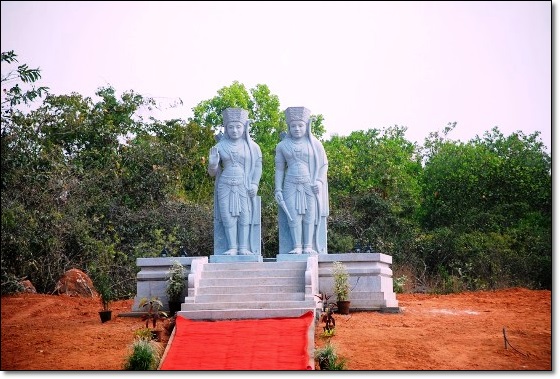
They visited the king with large number of followers in a procession complete with horses and musical band. The king received them with great love and affection. Koti-Chennaya presented a gift to the King. As Budhyanta was not offered a gift he became angry and left the Court in a huff. On the kings advice, Koti-Chennaya visited Budhyantas place with a gift. Although his ego was satisfied in making Koti-Chennaya come to his place with a gift, Budhyanta made them wait for hours. He ignored their presence. Tired with long waiting and irritated by the lack of respect from Budyanta, Koti-Chennaya left the place with heavy heart. Their hatred for him became more intense.
Suralu Tolahara Rulers
During medieval period, coastal Karnataka had come under the administrative control of many influential royal families. From the beginning of the Christian era up to mid-14th century, Alupas had ruled. The Hoysalas, Vijayanagara and the Nayaks of Keladi-Ikkeri had extended their administration over this province. Apart from these, several feudatory ruling families and petty (Palepattugalu) chieftains had effectively carried on their own administration in Udupi and Dakshina Kannada.
Prominent among them were the Tolaharas (Tolahaararu), who had administered larger part of Udupi taluk, from a place called Suralu in the district. It is believed that, this family and the Chawta family belonged to one and the same royal stock. They had ruled over Suralu, Shiriyara, Nalvattunadu, Kelanadu, Shankaranarayana, Basaruru, Horaladi, Pajamanguru, Jaddu, Haluvalli, Kenjuru, Hosuru, Nalkuru, Kuji, Peraduru, Neelavara, Vaddarse, Halligeri, Bainduru, Kirimanjeshwara, and KalthoduMaganes. Suralu, about eight km east from Barakuru, the capital of the Tuluva kingdom, was their capital. Kokkarane, near River Seetha, was another capital. Basaruru was a prominent port.
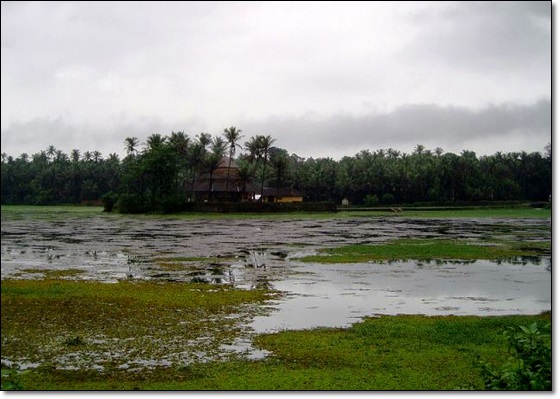
It is said that, the existing palace at Suralu was built during the 15th century. It is also stated that, among the twelve palaces in the old Dakshina Kannada district, which belonged to the DoddaJainaraja family, this is the only palace found in good condition. In front of the palace, on the western direction, there is an extensive royal hall, measuring two acres in extent. Next to this, there is also a small ante-chamber like space. Moving on from the main-door (Hebbagilu) of this ante-chamber, another royal hall, half an acre in extent, will be noticed, and next to that, is yet another smaller antechamber. Adjacent to this, is a big hall, square in shape, locally known as Chavadi, built by the Peradur-Gutti family.
This palace is a prominent piece of architecture, comprising several curious divisions. The members of this family had built several temples, the most prominent among them are found at Suralu, Pademata, Karji, Vaddambettu, Maradi, Ammunje, Neelavara, Perduru, Shankaranarayana and Basaruru. It is evident from the inscriptions that, during their administration, the temples at Peraduru and Neelavara had received sufficient lands and ornaments, in the form of gifts.
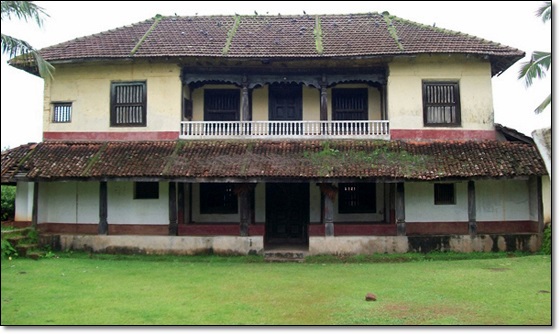
On the basis of each of the three copper plate inscriptions found here it is gathered successively that, 1) during A.D.1688, MahalingaTolahara was ruling this province; 2) during A.D.1691, MadanadeviTolahara was ruling the province; 3) by the time of A.D.1715, CheluvammadeviTolahara of this family was ruling. It is said that, the rulers of the Tolahara family, by virtue of their great valour, prevented the Portuguese, to some extent, from the occupation of the west coast of Udupi district.
In spite of the fact that, the Tolaharas had built a strong fort at Basaruru and stationed a huge army, a Commander-in-Chief of the Portuguese army called Piyatro de Silva, invaded the province with his three ships, during A.D.1569. During A.D.1608, (Hiriya) Senior Venkatappanayaka, the ruler of Ikkeri, had tried to capture Barakuru on the coast, and in the process had annexed BainduruSime, HalligeriSime, and Nalavattu Nadu. During the reign of IkkeriNayaks, Tolahara rulers were managing their administration very gloriously. But, as a consequence of Hyder Ali taking control over the province, the administration of the Tolaharas came to an end.
The Suralu palace was built way back in 1511 AD. It was renovated once in 1858. It has been ruled by the Alupas, Tolahars and Tipu Sultan, among other rulers. King NagendraTolahar was the last of the rulers to be coroneted in this palace.
Chandrashekarayya, a descendant of the Tolahar ruler, lived in this palace till 1983. He sincerely tried to protect the palace but soon after him, the palace was abandoned, and in consequence, it began to crumble down.
Also Read
| Comments on this Article | |
| Philip Mudartha, Pamboor-Charlotte,NC,USA | Mon, October-7-2013, 10:09 |
| Would anyone bring out ant eveidence from the rulers records of Konkani speaking communities during the rule of Tuluvas in these regions? Or there were no Konkani speaking immigrants before Ikkeri nayaks? | |
| Ronald Sabi, Moodubelle | Sun, October-6-2013, 1:31 |
| It is always pleasant knowing our history and roots. Brilliant job Edward Dsouza. Keep it up! Looking forward reading more such interesting topics. | |




 Write Comment
Write Comment E-Mail To a Friend
E-Mail To a Friend Facebook
Facebook Twitter
Twitter  Print
Print 














